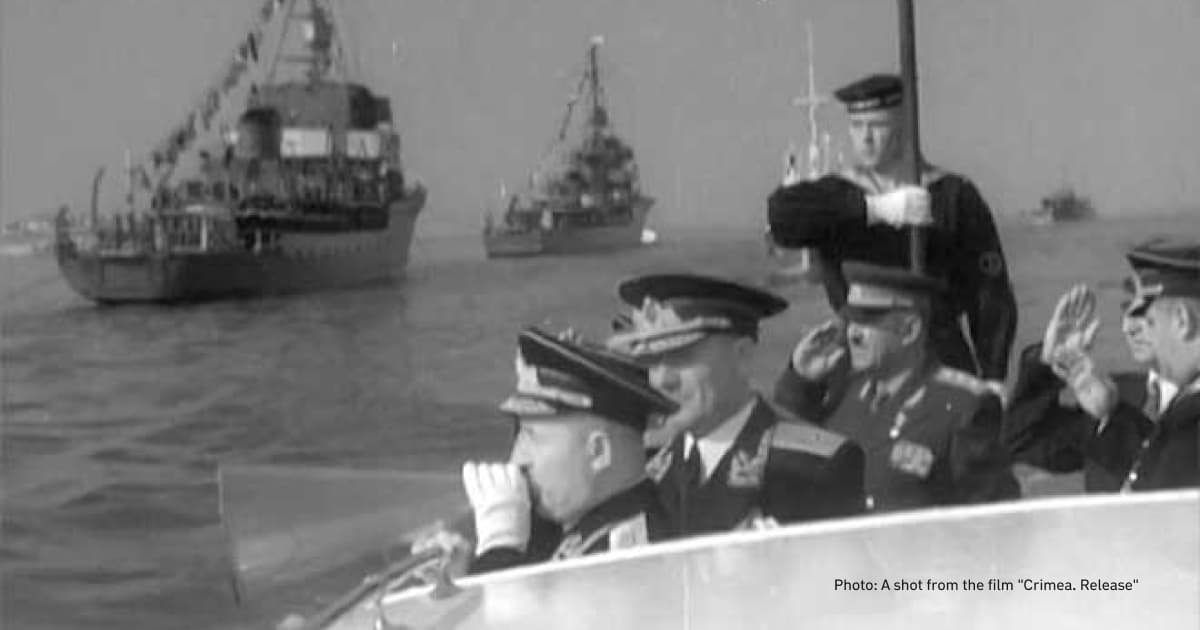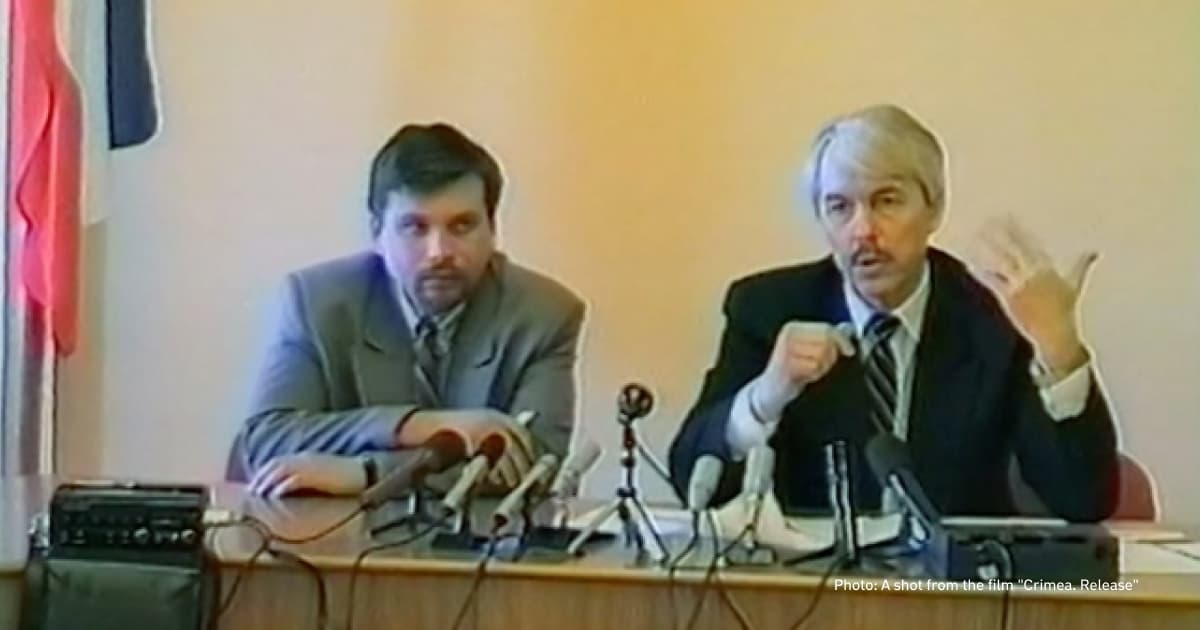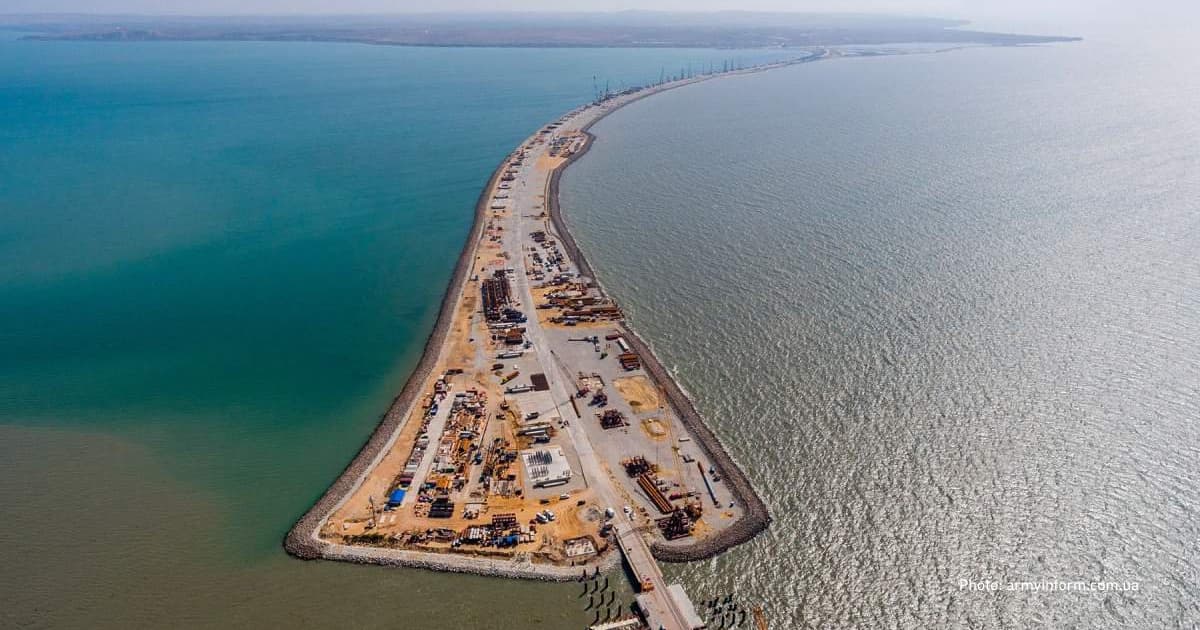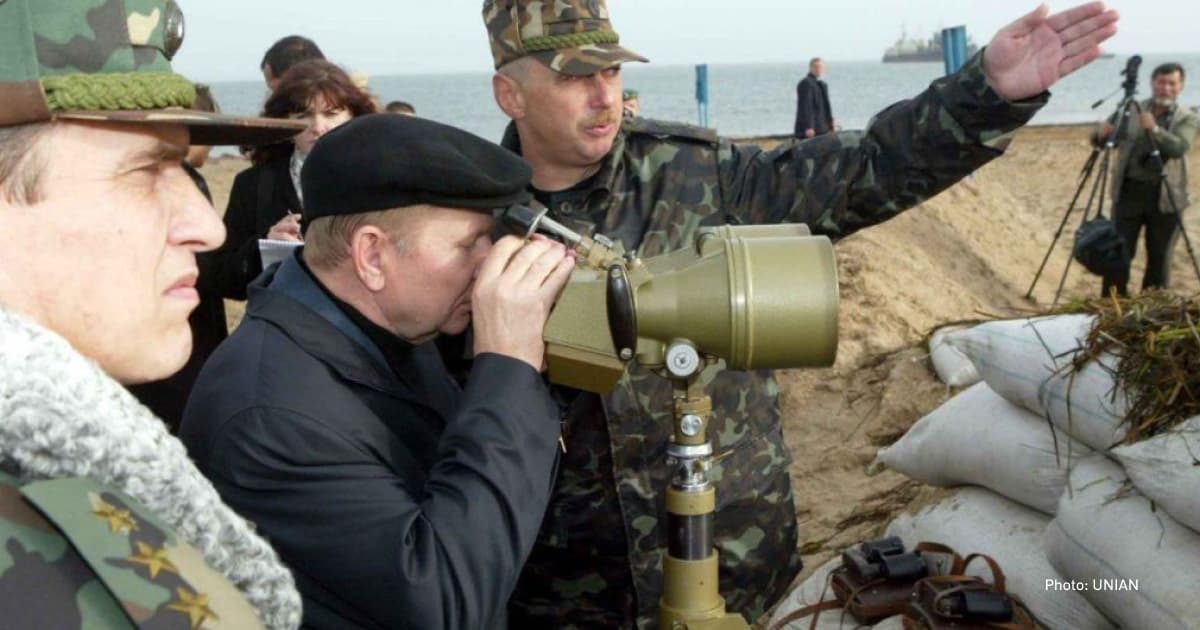How Russia occupied Crimea

The Verkhovna Rada of Ukraine has recognised the Autonomous Republic of Crimea (Qırım) as occupied by Russia since February 20, 2014. However, Russia had conducted provocations, politically and militarily influenced the situation in Crimea long before the military invasion of Ukraine. FSS agents laid the groundwork for separatist movements, and the Russians used the Black Sea Fleet in Sevastopol to create tension between Crimean residents.
In the article, we go back to the events that laid the foundation for the occupation of Crimea.
This article was published as part of the special project 'The War Continues: A History of Ten Years of Resistance'.
1994 — pro-Russian 'Republic' of Crimea
In February 1991, the Crimean region was granted the status of an Autonomous Soviet Socialist Republic within Soviet Ukraine, with its capital in Simferopol (Aqmescit). Political parties and organisations emerged on the peninsula. Among them was the Republican Party of Crimea, a pro-Russian organisation that advocated the separation of Crimea from Ukraine and its accession to Russia.
In the referendum on Ukraine's independence in 1991, 54% of residents of the then-ASSR Crimea voted for independence, 57% in Sevastopol. During the Soviet era, Sevastopol was a closed city with a special status of subordination due to the location of the Black Sea Fleet military base.
After the restoration of independence, Crimea became part of Ukraine and, in 1992, was granted the status of an autonomous republic. However, there were no clear rights of self-government. Therefore, the Verkhovna Rada of the Autonomous Republic of Crimea passed laws without the Ukrainian parliament's or the President's approval.
In 1993, the Verkhovna Rada of the Republic adopted two laws: "On the Election of the President of Crimea" and "On the President of Crimea". In 1994, they also passed a law "On the restoration of the constitutional foundations of the statehood of the Republic of Crimea".
In January 1994, elections for the president of the 'republic' were held in Crimea. The pro-Russian politician Yurii Mieshkov, Crimean Republican Party, won 73% of the vote. During his campaign, he promised to convert Crimea to the ruble zone and Moscow time and grant Crimean residents Russian citizenship. Mieshkov called on the State Duma to "incorporate Crimea into Russia".
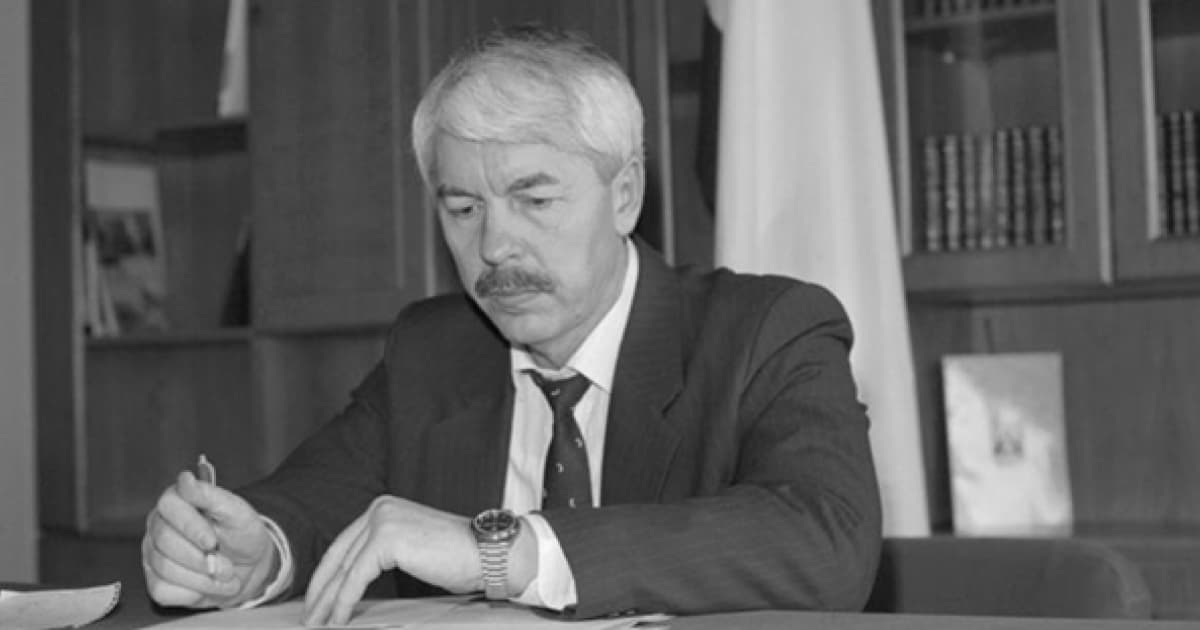
The Security Service of Ukraine established that Yurii Mieshkov was supported by the command of the Russian Black Sea Fleet, including the Commander of the Black Sea Fleet, Eduard Baltin, and the Russian FSS. Russian agents Vitaly Gavrilenko and Konstantin Yevdokimov arrived in Crimea to obtain positions of "assistants to the President of Crimea".
In 1994, Yurii Mieshkov took control of the Crimean branch of the Ministry of Internal Affairs — bypassing the central Ukrainian authorities — and appointed his protege. The administration of the republic's president planned to subordinate all law enforcement agencies to hold a 'referendum on independence'.
"Supporting Kyiv or Simferopol?" was the question the militiamen were asked. And they had to choose. They were also given weapons, including assault rifles, about 12,000 of them," Refat Chubarov, a member of the first convocation of the Verkhovna Rada of the Autonomous Republic of Crimea and chairman of the Mejlis (representative body — ed.) of the Crimean Tatar people, recounts those events.
After taking over the police, the republic's authorities planned to seize the Security Service of Ukraine building in Simferopol and appoint their head. The central office of the SSU decided to "work proactively" to prevent this scenario.
The Head of the Security Service of Ukraine in 1991-1994, General Yevhen Marchuk (died in 2021 — ed.), convinced the President of Ukraine in 1991-1994, Leonid Kravchuk, of the need to conduct a special operation in Simferopol and prevent the seizure of control over the local SSU.
"We have to urgently land in Crimea with Alpha (the Centre for Special Operations to Combat Terrorism of the Security Service of Ukraine — ed.) and seize our Security Service. I explained to the president that we would not do anything further outside, but we would not allow the Security Service to be seized," Yevhen Marchuk told Suspilne in an interview.
On May 19, 1994, the Security Service of Ukraine launched an operation to 'seize' the building of the SSU office in Crimea. On that day, President Mieshkov was to take control of the service. Special forces took the building under guard and armed themselves in case of an armed attack or provocations by the police controlled by the administration of the President of the Republic of Crimea.
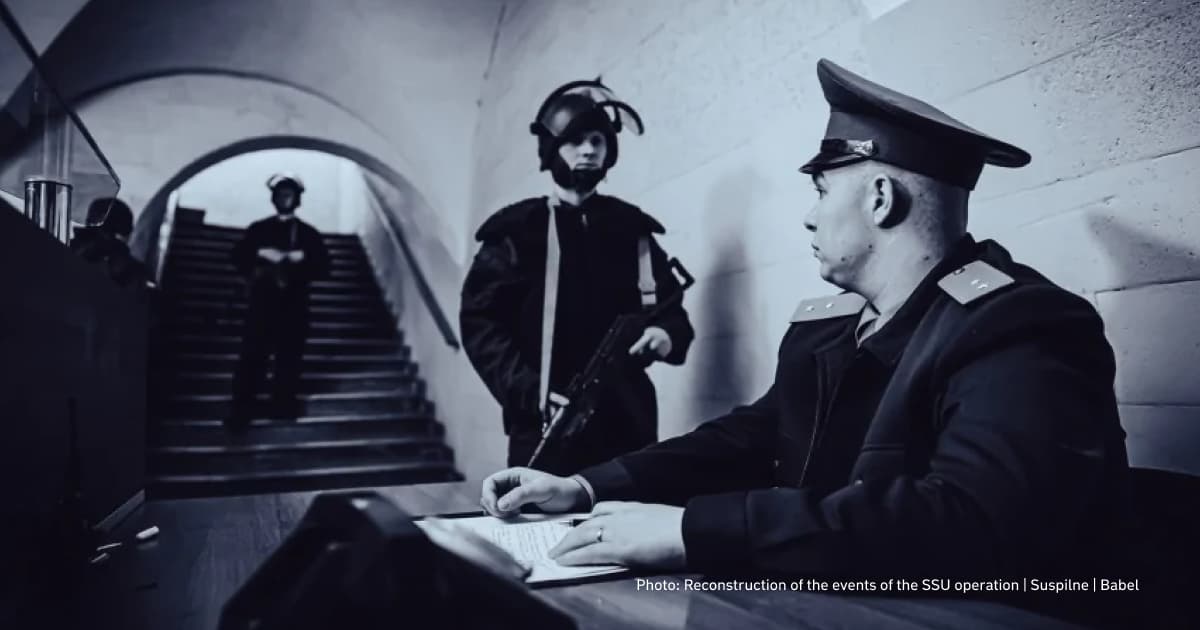
"Mieshkov did not come, he was briefed. His representatives came to be met by Alpha," said Yevhen Marchuk.
The National Guard of Ukraine in Crimea supported the actions of the Security Service. On May 22, they paraded their armoured personnel carriers through the streets of Simferopol. Other military forces also supported Ukraine. The 10th Separate Special Forces Brigade of the Armed Forces of Ukraine monitored the Black Sea Fleet in case they "interfered with the work of Alpha".
The special forces remained in Simferopol for another three months. The SSU took under surveillance the building of the Government and the Verkhovna Rada of the Autonomous Republic of Crimea, as well as the entrances to the main cities on the peninsula — Simferopol (Aqmescit), Sevastopol (Aqyar) and Kerch (Keriç).
The operation resulted in the loss of Mieshkov's authority, says Refat Chubarov, a former member of the Crimean parliament. Also, the return of control over the situation on the peninsula allowed the central authorities in Ukraine to make decisions on the governance of the 'republic', which would be immediately implemented in Crimea.
In March 1995, the Verkhovna Rada of Ukraine abolished the president's post and the constitution of Crimea. Later the same year, the Verkhovna Rada adopted a new law on the provisions of the Autonomous Republic of Crimea. Sevastopol remained subordinate to the central government. After losing the presidency, Yurii Mieshkov fled to Russia in 1995.
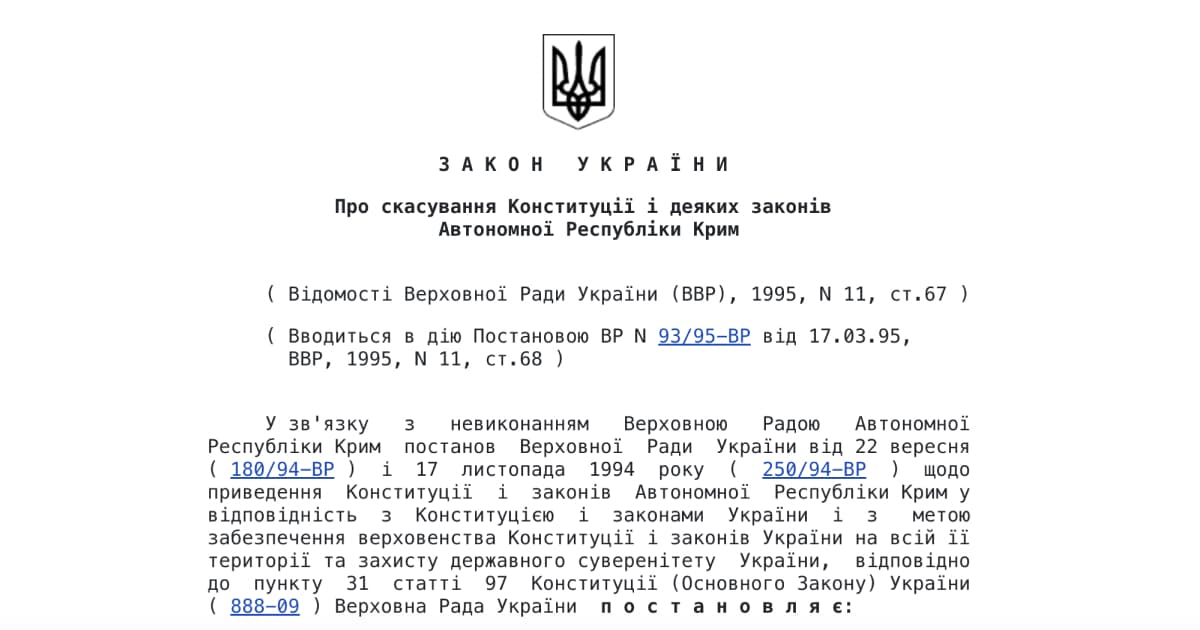
2003 — Provocation on Tuzla Island
Tuzla Island is a small island in the middle of the Kerch Strait on the east coast of Crimea. The strait connects the Black Sea and the Sea of Azov. Officially, the island belongs to the city of Kerch in the Autonomous Republic of Crimea.
In early 2003, Ukraine and Russia signed an agreement on the Ukrainian-Russian border. According to the agreement, Russia recognised the Autonomous Republic of Crimea as Ukrainian territory. Both states also recognised the Sea of Azov and the Kerch Strait as "internal waters of the two states".
However, on September 29, 2003, Russia began construction of a dam in the Kerch Strait from Krasnodar Krai (a federal subject of Russia (a krai), located in the North Caucasus region of southern Russia and administratively part of the Southern Federal District — ed.) to the island of Tuzla, bypassing Ukraine's consent and without warning. The reason was "to protect the Taman peninsula (a peninsula in the Krasnodar Krai - ed.) from erosion". Ukraine's State Border Guard Service reported that 'the Russians were working in three shifts' and that the dam construction was carried out quickly. The service sent a detachment of border guards to the island to set up an observation post to monitor Russia's actions.
The then president of Ukraine, Leonid Kuchma, was visiting Latin America at the time of the dam's construction. He returned to Ukraine in October to take control of the situation. The Ukrainian Foreign Ministry sent a note of protest to Russia, and the Ukrainian mission to the UN General Assembly received instructions to raise the issue of the Tuzla dam at a meeting.
Leonid Kuchma held several talks with Russian President Vladimir Putin. Putin promised "that he would instruct the leadership of the Krasnodar Territory to suspend the work".
On October 20, after talks with Russian President Vladimir Putin, Leonid Kuchma left Ukraine to resume his visit to Brazil. The Russians also resumed construction of the dam. Ukraine's Border Guard Service responded by setting up fortifications on the island, and military helicopters and ships patrolled the strait.
Russia stopped construction on October 23. According to the State Border Guard Service, about 100 metres of the dam remained to be built on Tuzla Island.
In December 2003, Ukraine and Russia signed an agreement on the joint use of the Kerch Strait. According to the agreement, merchant ships flying the flags of the signatory states or third countries had the right to free passage through the strait. Warships had the right to pass through the strait, subject to the approval of the signatory states. In February 2023, Ukraine denounced the treaty.
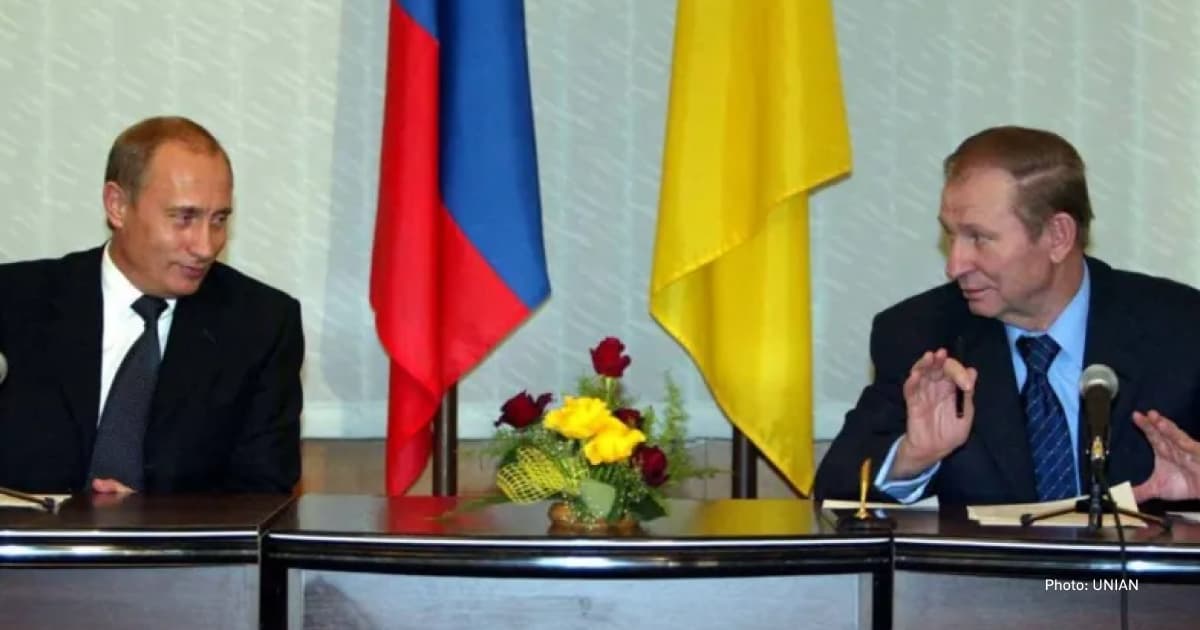
Leonid Kuchma put forward two reasons for Russia's actions. The first one was economic. The Kerch Strait is shallow, so ships pass through the artificial Kerch–Yenikale Canal. It lies between the eastern coast of Crimea and the island of Tuzla. Ships pay a toll to pass through the canal, and as of 2003, Ukraine received about six million dollars from the toll.
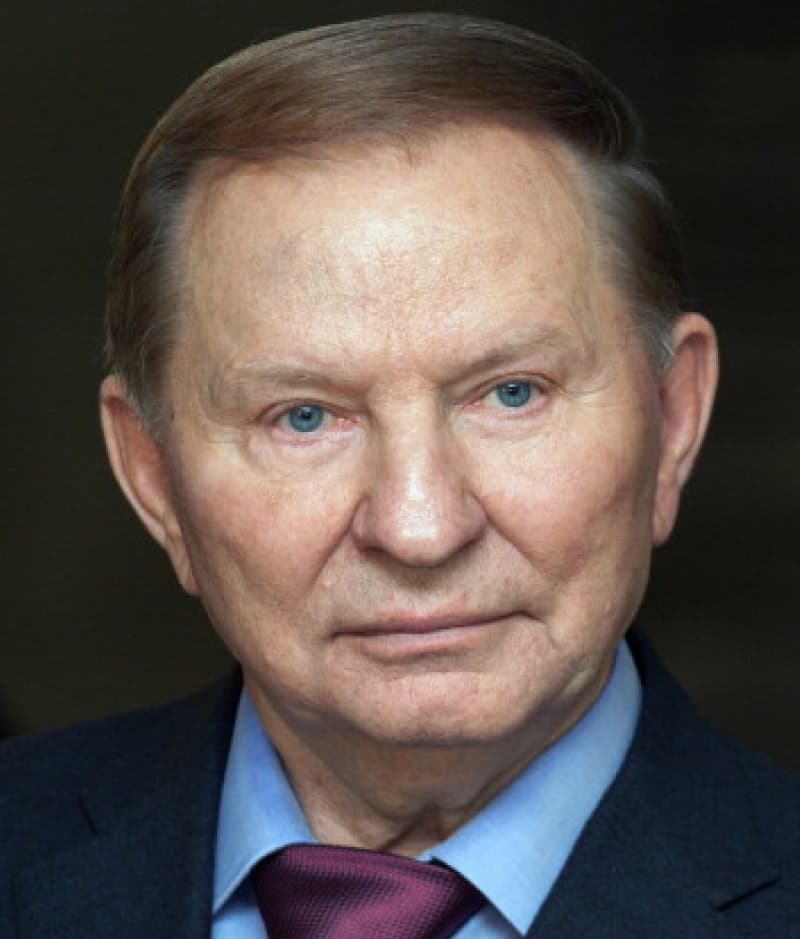
"Whoever has Tuzla has the canal. And whoever has the canal has the money for the ships' passage,"
the former president said in a commentary to Ukrainska Pravda.
The second reason Kuchma called "signs of imperial revanchism". In his opinion, the Russians were testing how and to what extent Ukraine was ready to retreat in the event of provocations and encroachments on its territorial integrity.
After the occupation of Crimea in 2014, Russia completely seized the Kerch Strait and Tuzla Island. Russia used its naval forces to blockade Ukrainian ports in the Sea of Azov between 2014 and 2022 and to inspect all ships passing through the Kerch Strait.
The Russians also built the Kerch Bridge from the Krasnodar Krai to the Crimean peninsula. Ukraine, the European Union, and the UN have all recognised the construction of the bridge as illegal and contrary to international law.
1991-2010 – the Black Sea Fleet and the Kharkiv Pact
After the collapse of the USSR, the Black Sea Fleet became a part of Ukraine. Most of the fleet's bases were already located in Ukrainian cities: Sevastopol and Kerch in Crimea, Odesa and Izmail, Odesa region, and Ochakiv, Mykolaiv region.
On April 5, 1992, President Leonid Kravchuk signed a decree transferring the fleet to the Ukrainian Navy. However, not all the officers of the Fleet agreed to take the oath of allegiance to the Armed Forces of Ukraine. In April of the same year, Boris Yeltsin, President of the Russian Federation from 1991-1999, signed the decree on the subordination of the Black Sea Fleet to the Russian Navy.
Officers who had pledged allegiance to Ukraine were pressured by those who had pledged allegiance to Russia. Their promotion to military ranks was delayed, and they were not provided housing. Ukrainian service members left the fleet in Crimea and moved to the Ukrainian naval bases in Odesa.
Ukraine sought to pacify its relations with Russia, so in 1993, Leonid Kravchuk and Boris Yeltsin signed the Masandra Accords. The agreement set out their intention to partition the Black Sea Fleet between the two countries in half. Until the division, the Russian Navy had controlled the fleet.
Despite the events of 1994 (when the Black Sea Fleet Command supported separatist pro-Russian sentiments in Crimea — ed.), Ukraine and Russia divided the Black Sea Fleet on June 9, 1995. 18.3% of the ships belonged to the Ukrainian Navy and 81.7% to the Russian Navy. The naval bases in Izmail, Odesa, Ochakiv, and Kerch came under the control of the Ukrainian Navy. The base in Sevastopol remained under the control of the Russian Black Sea Fleet.
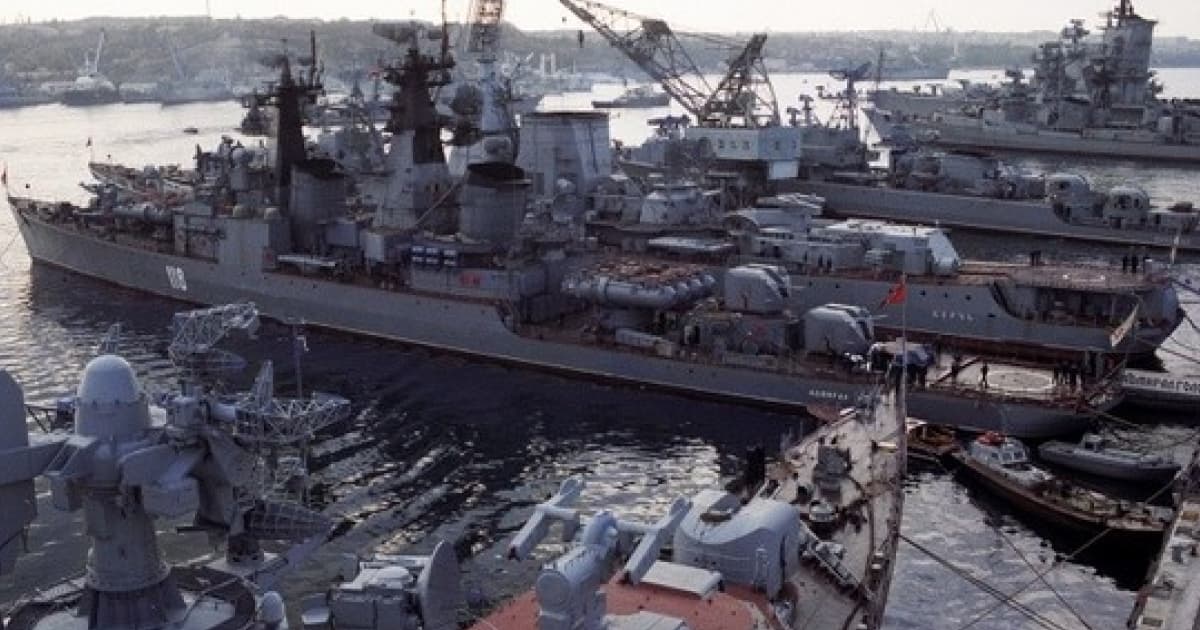
However, this agreement did not regulate the status of the Black Sea Fleet, the conditions of its deployment on the territory of Ukraine, or the financing of the fleet's presence. Therefore, in 1997, President Leonid Kuchma and Boris Yeltsin signed another agreement on the Status and Conditions of the Russian Black Sea Fleet's Stay in the Territory of Ukraine. The agreement was valid until 2017. The agreement granted 25,000 Russian military personnel the right to serve and live in Crimea.
The agreement was criticised for being inconsistent with the Constitution of Ukraine, adopted a year earlier. Under Article 17, Ukraine was obliged not to allow foreign military bases to be located on its territory.
Russia did not comply with the agreement. The Russian Black Sea Fleet was supposed to comply with Ukrainian legislation, for example, in terms of the environment. However, in 2004, the fleet's military submerged aviation ammunition from the Orsk and Caesar Kunikov landing ships, violating environmental legislation.
The deployment of such a large number of troops was seen as a danger to the residents of Sevastopol. The Russians lived in the city rather than at the fleet bases. They also had permission to enter the city in uniform. According to international practice, including that of NATO, military personnel from foreign bases can only go outside the base's territory in civilian clothes. This led to tensions between Russians and Ukrainians in Crimea.
Hryhorii Perepelytsia, Doctor of Political Science and Director of the Institute for Foreign Policy Studies, believed that the Russian Black Sea Fleet's deployment in Sevastopol fostered the development of pro-Russian forces on the peninsula and hindered Sevastopol's economic growth.

"Sevastopol requires very systematic and uninterrupted work. The Ukrainian authorities failed to do this. Leaving behind the Black Sea Fleet offers no prospects for the city's development since it is now treated only as a military base. Sevastopol has good prospects for development as a recreational area using its port facilities. All this could work to the benefit of the city and its budget. But, unfortunately, the current state of affairs means stagnation for Sevastopol, which will remain a military enclave with no prospects for development. Russia will not invest in Sevastopol because this city belongs to Ukraine,"
he explained the prospects for the fleet's deployment in Crimea.
On April 21, 2010, Viktor Yanukovych, President of Ukraine (2010-2014) convicted of treason, and Dmitry Medvedev, President of Russia (2008-2012), renewed an agreement in Kharkiv on the deployment of the Russian Black Sea Fleet on the territory of Ukraine. They were referred to as the Kharkiv Accords after the place of execution. They provided for the Black Sea Fleet of the Russian Navy to stay in Sevastopol until 2042. In return, Ukraine would receive "a $100 discount on gas if the gas price does not exceed $333 per thousand cubic metres, or 30% if the price falls below that".
The agreement did not affect the quarterly negotiations between Naftogaz, GTSOU and Gazprom on the gas price for Ukraine — by 2012, the price was already $425 per thousand cubic metres for Ukraine.
There were protests in Ukraine against the ratification of the agreement. Ukrainian regional state administrations (Lviv, Ternopil, Volyn and Rivne) demanded the impeachment of President Viktor Yanukovych over the signing of the agreement.
Opposition politicians, including Yulia Tymoshenko, leader of the Yulia Tymoshenko Bloc alliance, and former presidents Leonid Kravchuk and Viktor Yushchenko, condemned the signing of the agreement.
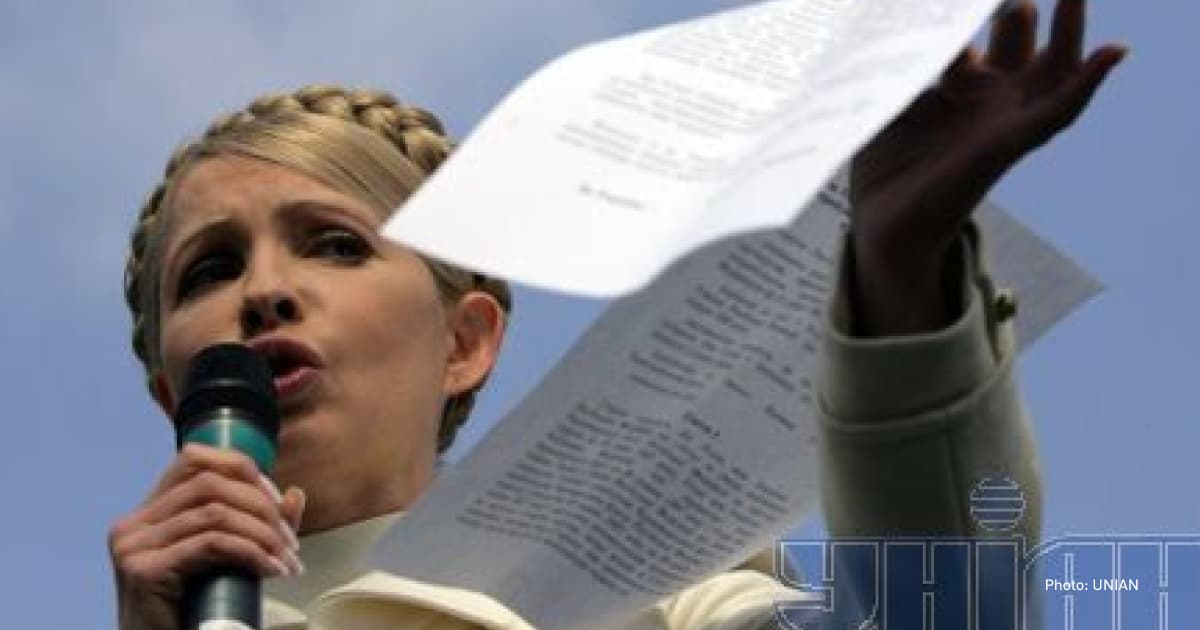
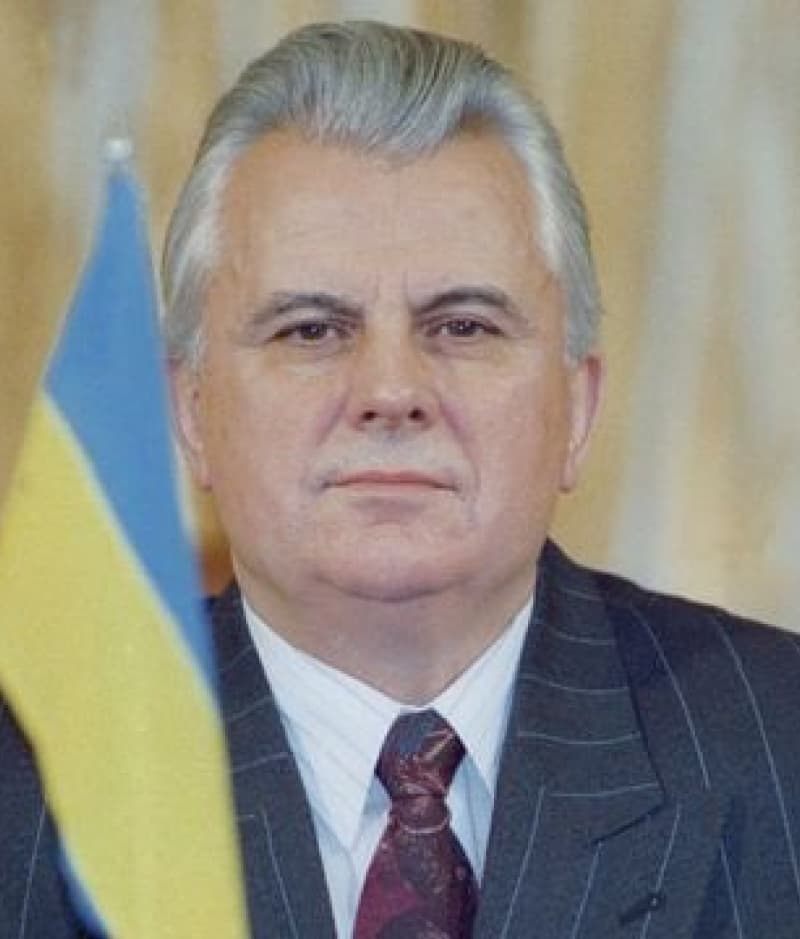
"Today, the government's political course limits the sovereignty of our country. In any case, we will feel Moscow's growing influence on Ukraine,"
Leonid Kravchuk explained his position on signing the agreements.
Viktor Yushchenko said that "the agreement violates Article 17 of the Constitution of Ukraine, which prohibits the deployment of foreign military bases on the territory of the country".
In 2010, Ukrainian journalist, ex-officer of the Armed Forces of Ukraine and Kremlin prisoner Dmytro Shtyblikov said that Russia did not want to allow Sevastopol to become a commercial port, so it was trying to keep the Black Sea Fleet military base there.
"If the Black Sea Fleet moves from here to Novorossiysk (a port city on the Black Sea in Krasnodar Krai — ed.), the city will suffer. When Novorossiysk got berths for warships, its cargo turnover dropped by ten per cent. Suppose the entire fleet transferred to Novorossiysk. In that case, Russia's cargo turnover at its southern gate will drop enormously, and Ukraine will get a ready-made port area in Sevastopol with its infrastructure," explained Shtyblikov.
On April 27, 2010, the Verkhovna Rada ratified the agreement, despite attempts by opposition People's Deputies to disrupt the parliamentary session and mass protests. Ukrainian society demanded explanations from the Verkhovna Rada on the process of ratification and clarifications from the Constitutional Court on the agreement's compliance with the Constitution of Ukraine. The authorities did not respond to these demands.
After the occupation of Crimea, the State Duma of the Russian Federation denounced all agreements on the division of the Black Sea Fleet, thereby appropriating the remnants of the Ukrainian fleet located in Crimea.
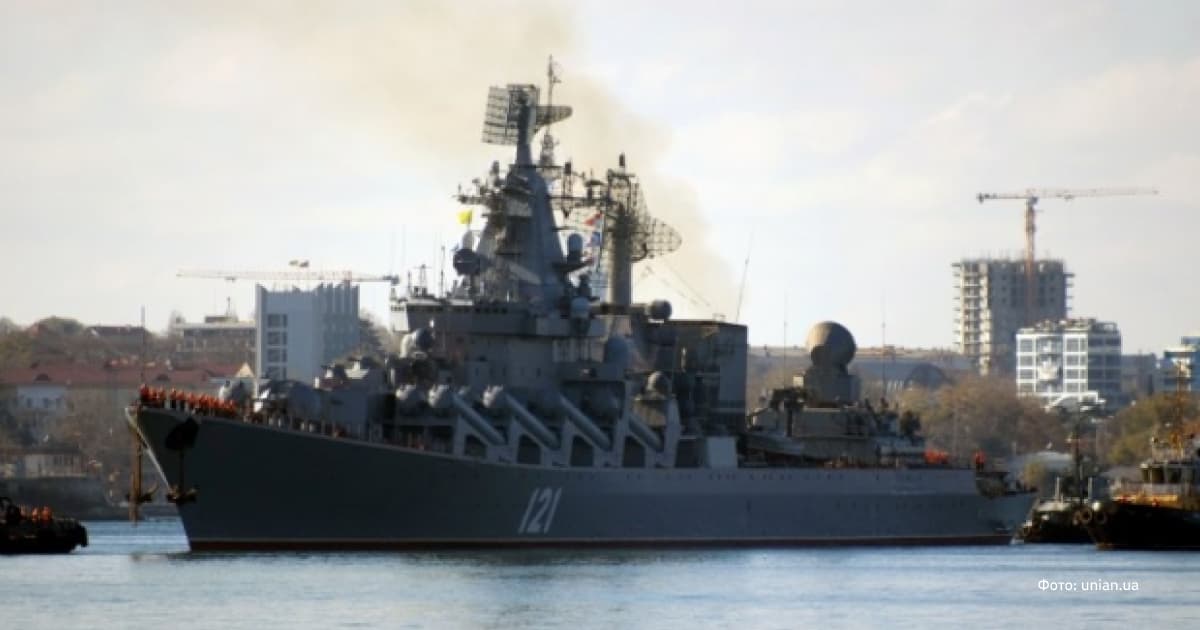
In 2022, after the start of the full-scale invasion, the State Bureau of Investigation was authorised to investigate the agreements. The same year, the bureau served former Justice Minister Oleksandr Lavrynovych and former Foreign Minister Kostiantyn Hryshchenko with a notice of suspicion "for committing treason during the drafting, approval, signing, ratification and implementation of the so-called Kharkiv Accords".

